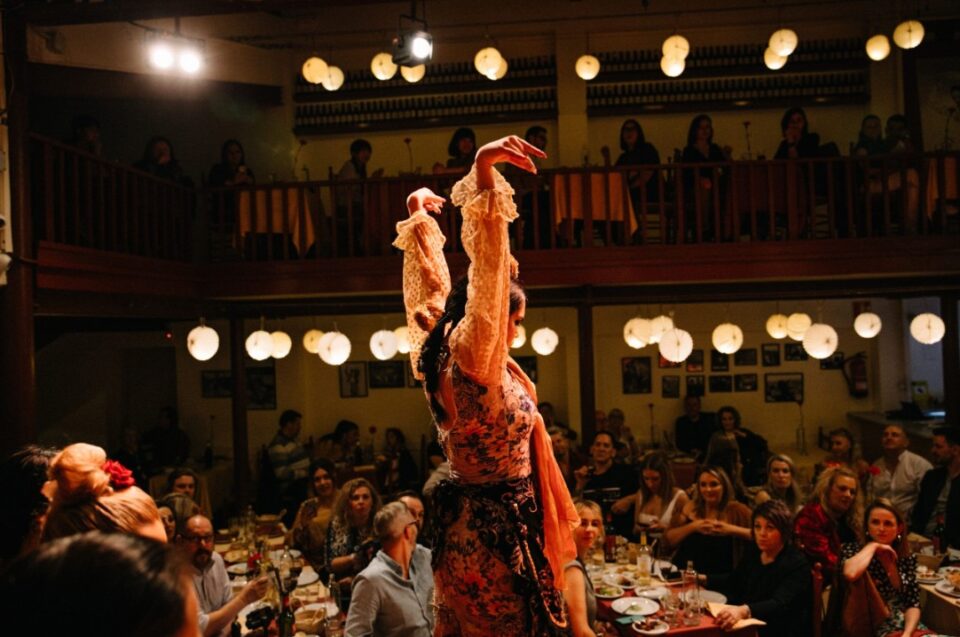Barcelona is a city that never sits still. Its rhythm comes from a mix of art, food, and music that spills into every corner. The Gothic alleyways carry centuries of history, Gaudí’s surreal architecture feels alive, and the food culture invites you to slow down and share.
For many visitors, evenings at Tablao de Carmen capture this spirit, combining flamenco with authentic flavors. Let’s not see the top things to do in Barcelona which highlight how seamlessly culture, tapas, and music define the heartbeat of the city.
A City Built on Art and Imagination
Barcelona’s story is best told through its architecture. Antoni Gaudí is the name everyone knows, and for good reason. His unfinished masterpiece, the Sagrada Família, towers over the city like a vision still unfolding. The basilica’s intricate details make visitors stop in silence, as though they’re standing inside a sculpture rather than a building.
Park Güell, with its ceramic benches and playful mosaics, offers a different side of Gaudí. It’s where families gather, street musicians perform, and tourists watch the sunset over the Mediterranean. These spaces aren’t just attractions, they’re places where Barcelona’s residents actually spend time, which is why they feel alive.
Other highlights of the artistic side of the city include:
- The Gothic Quarter (Barri Gòtic) ─ Narrow alleys, medieval towers, and surprising little squares where you suddenly stumble upon buskers or tucked-away cafés.
- Picasso Museum ─ A chance to see the early works of the artist who grew up in Barcelona and later reshaped modern art.
- MACBA (Museum of Contemporary Art) ─ A white, light-filled building that contrasts sharply with the surrounding old streets, yet perfectly symbolizes the city’s balance of past and future.
Tapas as a Way of Life
Eating in Barcelona is as much about how you eat as what you eat. Tapas are not just snacks on plates, they are the glue of social life. You’ll rarely see locals eating tapas alone; they’re shared with friends over long conversations and multiple glasses of cava.
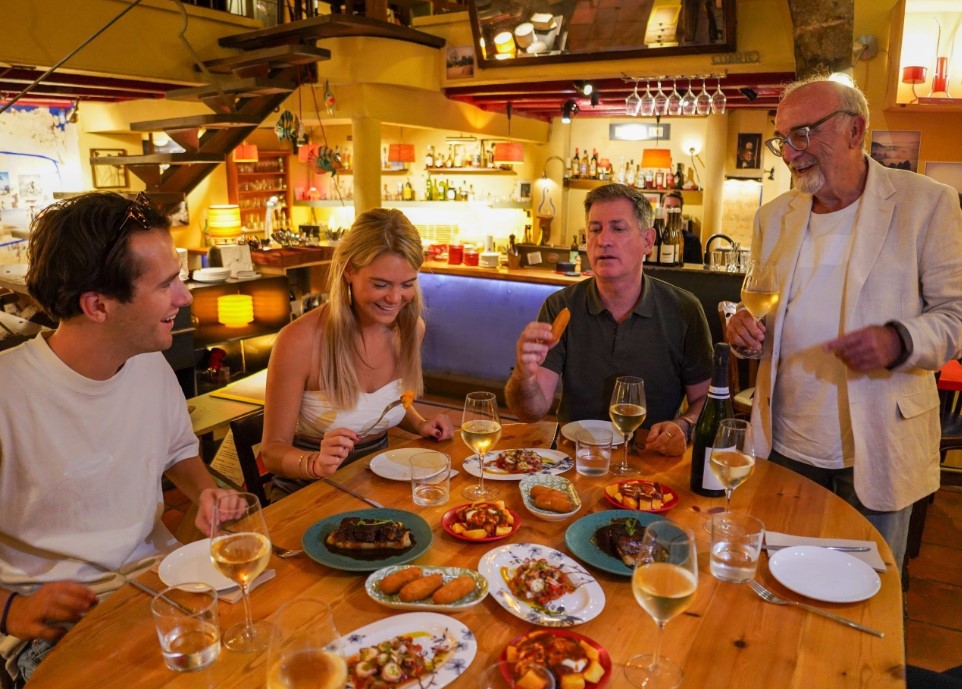
If you’re compiling the top things to do in Barcelona, setting aside one evening for a tapas crawl should be near the top of your list. Start in a traditional bar with anchovies and olives, then move to another for grilled prawns, and end with patatas bravas paired with vermut. Each stop brings a different atmosphere and new flavors.
Some essential tapas experiences to try:
- Pan con tomate ─ Simple bread rubbed with tomato, garlic, and olive oil. A staple on every table.
- Jamón ibérico ─ Thin slices of cured ham that melt on your tongue.
- Seafood tapas ─ Especially in Barceloneta, where the sea is just steps away.
Markets like La Boqueria and Mercat de Sant Antoni are also worth visiting. They’re not tourist gimmicks, but places where chefs and locals actually shop. Pull up a stool at a counter and order directly from vendors, and you’ll see how seamlessly food blends into Barcelona’s everyday rhythm.
The Energy of Flamenco Nights
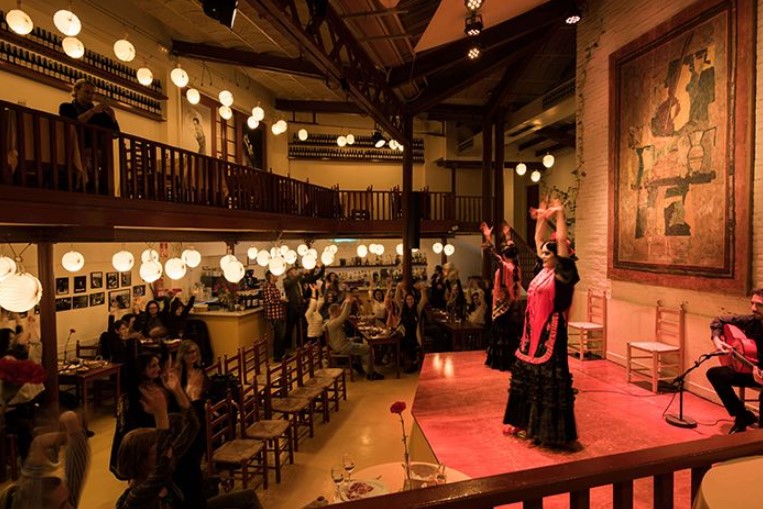
While flamenco is rooted in Andalusia, Barcelona has made it part of its cultural soul. A tablao (flamenco venue) is not just a stage, it’s a gathering place where passion fills the room.
When the singer’s voice rises and the dancer’s shoes strike the floor, the intensity is unlike anything else. Even those unfamiliar with flamenco are swept up by the emotion. The mix of guitar, voice, and dance tells stories of joy, loss, and resilience. It’s more than performance; it’s catharsis.
Among the city’s flamenco venues, Tablao de Carmen is one of the most memorable. Created in 1988 in honor of legendary dancer Carmen Amaya, it sits inside Poble Espanyol, a cultural village on Montjuïc hill. The venue itself feels like a traditional Andalusian courtyard, giving guests an intimate, almost family-like experience.
What Visitors Can Expect at Tablao de Carmen
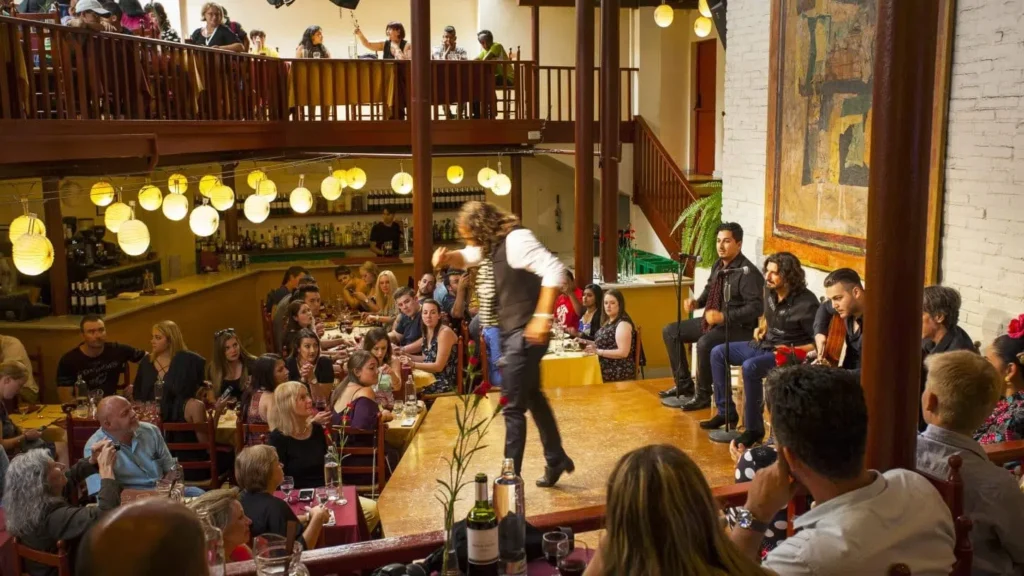
- Showtimes ─ There are two evening sessions daily. The first dinner service begins around 6:00 PM with the show starting at 6:45 PM, while the second dinner opens at 8:30 PM with the performance beginning at 9:15 PM. Each lasts about an hour with a short intermission.
- Food and packages ─ Guests can choose between a tapas menu, a full dinner menu, or simply drinks with the show. Options cover vegetarian, vegan, gluten-free, and children’s meals, so it’s very flexible.
- Atmosphere ─ Seating is arranged close to the stage, so you feel every rhythm of the footwork and guitar. The courtyard design creates the sense of being in a small Andalusian town square.
- Poble Espanyol entry ─ Tickets include access to explore Poble Espanyol from 4:00 PM on the day of your reservation. This makes it easy to combine sightseeing with an evening of flamenco.
- Location & access ─ The venue is fully accessible and located at Av. Francesc Ferrer i Guàrdia, 13. The nearest metro stop is Plaça Espanya (about a 12-minute walk), and buses 13, 23, and 150 also stop nearby.
Neighborhoods with Their Own Personality
Part of Barcelona’s charm is how each neighborhood feels like its own world. A quick metro ride changes the atmosphere entirely.
- El Born ─ Trendy but historic, filled with wine bars, tapas spots, and the breathtaking Santa Maria del Mar church. It’s perfect for evening strolls when the streets are buzzing.
- Gràcia ─ Once a separate village, now absorbed into the city. Still keeps its local squares where residents gather at night, giving it a slower, bohemian energy.
- Eixample ─ Known for its modernist grid layout, wide avenues, and Gaudí’s masterpieces like Casa Batlló and La Pedrera. Walking here feels like stepping through a living art gallery.
- Barceloneta ─ Where the city meets the sea. Sunbathers by day, seafood feasts by night. It balances Barcelona’s urban heart with Mediterranean relaxation.
Exploring these districts on foot or by bike allows you to catch the small details: a wrought-iron balcony, a mural tucked between shops, or the smell of fresh churros drifting from a café.
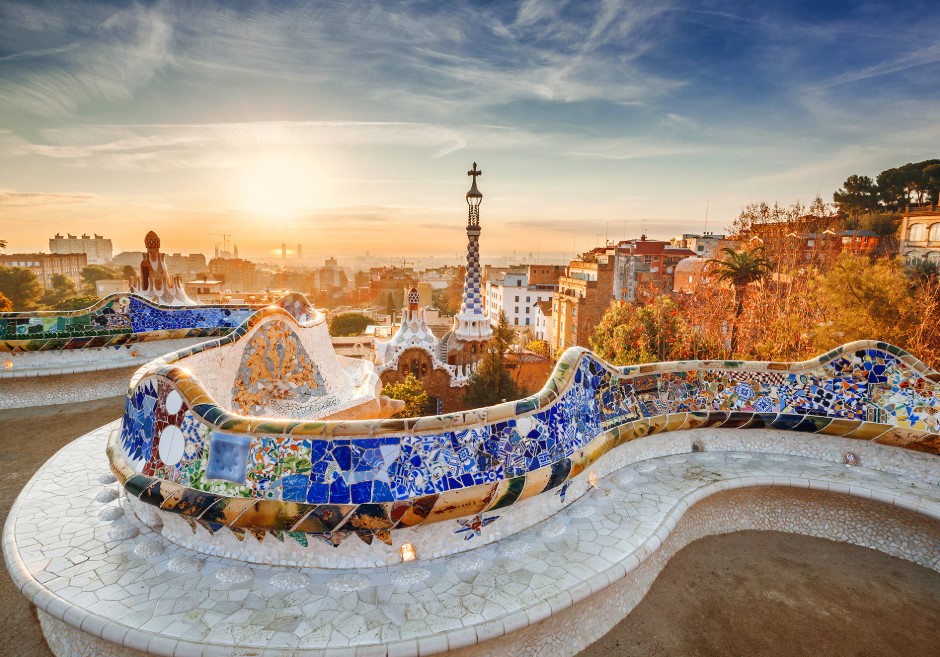
Markets and the Everyday Pulse
Barcelona’s markets are more than food halls; they’re social crossroads. La Boqueria, with its bright fruit stalls and buzzing counters, draws the most attention, but Mercat de la Concepció and Mercat de Sant Antoni show a more local face.
Visiting them gives you a sense of the daily rhythm of the city:
- Families are buying ingredients for lunch.
- Locals are enjoying a quick tapa at a counter before heading back to work.
- Vendors who’ve been in the same stall for generations, passing down knowledge of Catalan produce.
Pulling up a stool here gives you as much insight into the city as any museum could.
Why Barcelona Stays With You
Barcelona is not a city you simply visit and leave behind. It works its way into memory through moments, watching the light shift on the Sagrada Família’s stained glass, sharing tapas late into the night, or feeling the intensity of a flamenco dancer’s gaze.
In the end, what makes Barcelona special is not any single attraction, but the way its culture, flavors, and rhythms come together. That’s why it remains one of Europe’s most captivating cities for travelers seeking depth rather than just a checklist of sights.

